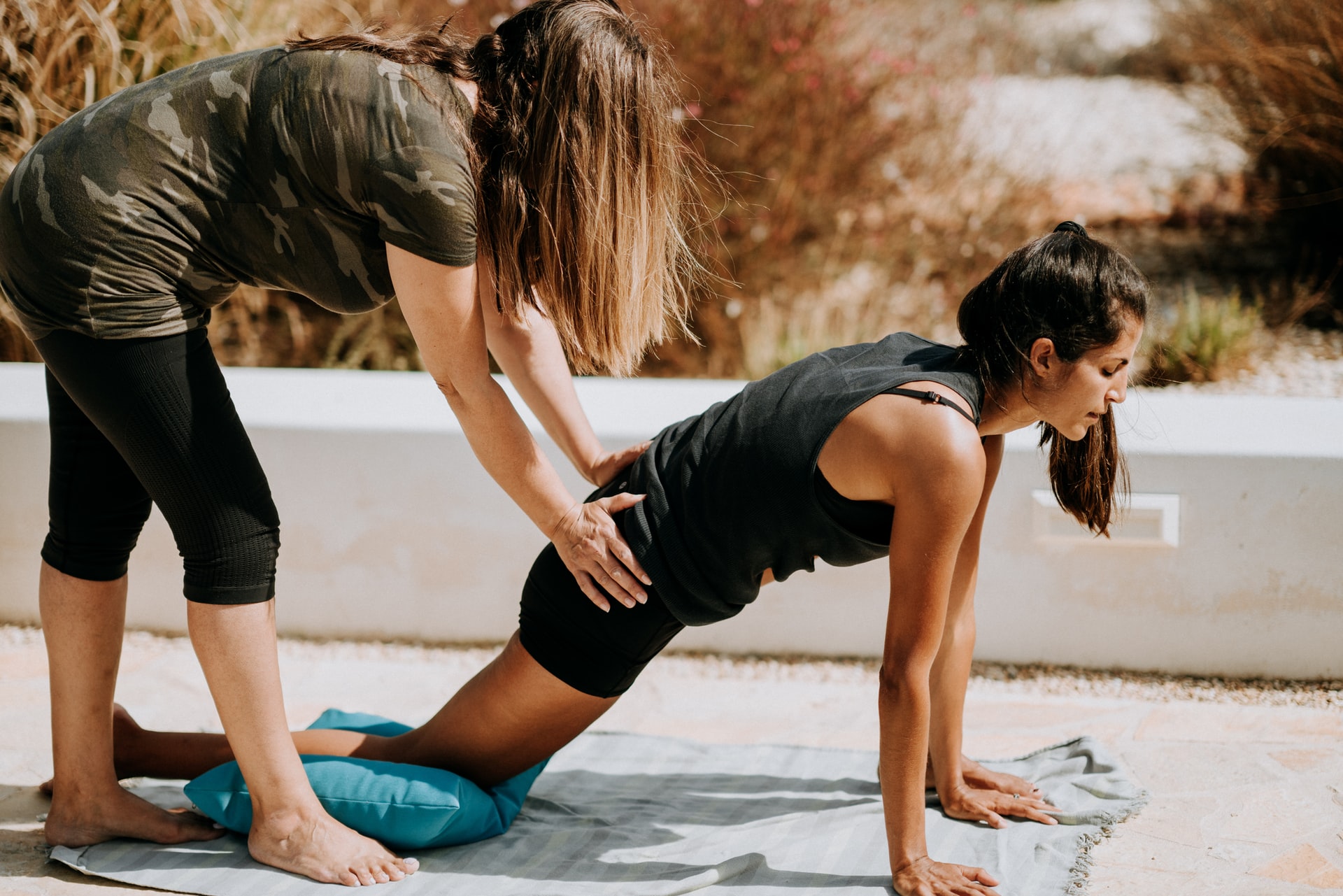
Is Adjustment and Alignment Necessary for Yoga Practice?
One of the most critical things to keep in mind while you perform any physical activity such as yoga or workout is to ensure that you do it right. A slight carelessness can lead to serious injuries and may also lead in prolonged ailments. It is true that yoga, as compared to modern-day workout, is a calmer and more controlled practice. But, it also involves hundreds of complex asanas that take months to master. This is why, yoga pays a heavy significance to the study and practice of adjustment and alignment.
Adjustment and alignment, as the term is used in yogic studies, is the process of learning the correct technique of getting in and out of a posture to enhance its benefits and prevent any possible injuries. Now, you must think that the ‘correct technique’ requires you to be exactly what your teacher says or what you see others in the class doing. And, that would make you question the whole yogic concept of ‘listen to your bodies over anyone else and do what feels right, isn’t it?
Your hesitation is understood but let us clarify that yoga or the practice of adjustment and alignment isn’t meant to put everyone into the same category and weed out those who don’t ‘fit’. Contrary to popular misconception, the process involves offering various possibilities to practitioners of all levels irrespective of their limitations. By encouraging the use of modifications and props, it helps you fine the safest and the most beneficial way to get into an asana and reap the maximum benefit out of it. Once you understand the concepts of alignment, you would find yourself in a position to make almost any yoga pose work according to your body.
Just like yoga isn’t designed to be the same for everyone, there is no ‘one shoe fits all’ in adjustment and alignment as well. With the evolution of yoga, alignment systems have gone through several changes of their own which are based on different branches and traditions. While some of these systems may contradict one another, it also leaves you a big room for an individualized approach to see what works for you and what doesn’t.
If you are learning to be an Yoga expert or Yoga teacher in adjustment and alignment or about to take your first Yoga class, there are a few unspoken rules that you should be aware of.
- Consent is important – Not everybody feels the same way about direct physical contact, so it is important that there is proper consent from practitioners that allows the teachers to guide them throughout the class.
- Allow students to opt out – The comfort level of adjusting into a pose depends from posture to posture. If you sense discomfort from the student, allow them to opt out. Similarly, if you feel you aren’t ready for something, don’t hesitate to inform your teacher.
- Be gracious – If a student asks you to ‘stop’, don’t take it personal. Be gracious about it. Maybe try and talk to the student after the Yoga class to see if you can do something to make them feel better.
- Don’t startle the students – If you are about to help a student with adjustment, make your presence known and don’t just startle them with a sudden contact.
- Encourage self-awareness –Make your students aware that it is more important to listen to their bodies than to reach some imaginary milestone. They don’t need to impress anyone, instead they need to avoid any injuries and do what feels right.
Why is Adjustment and Alignment Necessary?
We could probably mention several reasons why it is important to implement adjustment and alignment is necessary to yoga training, however the most significant ones are:
- It helps to create a stable foundation for a safe practice,
- It allows the body to open in new ways, and
- It reduces the risk of injuries
While you might not feel a sudden, sharp pain from doing a pose out of alignment, many yoga injuries are accumulative, increasing little by little. Wear and tear on joints and supporting tissues happen over time, so many yoga students find themselves with repetitive use ailments years into their practices and have to break long-established patterns to remake their poses in healthier ways. That’s why it’s important to establish optimal alignment as early in your practice as possible, which can often mean using props liberally.
Using the right props, like a grippy supportive mat in addition to blocks and straps, is not in any way a signal of inadequacy. These props are intended to help yoga students practice with good alignment right from their very first day instead of compromising their form.
For instance, in a standing forward fold, you might not be able to touch the ground with your hands while keeping a straight spine. You could let the spine round or bend your knees, but then you are missing out on stretching the hamstrings and opening the chest. Using blocks under your hands allows you to hit every note of the pose in the safest way.
Thus, it is right to say that the techniques of adjustment and alignment are as important, if not more, as the practice of yoga itself.




